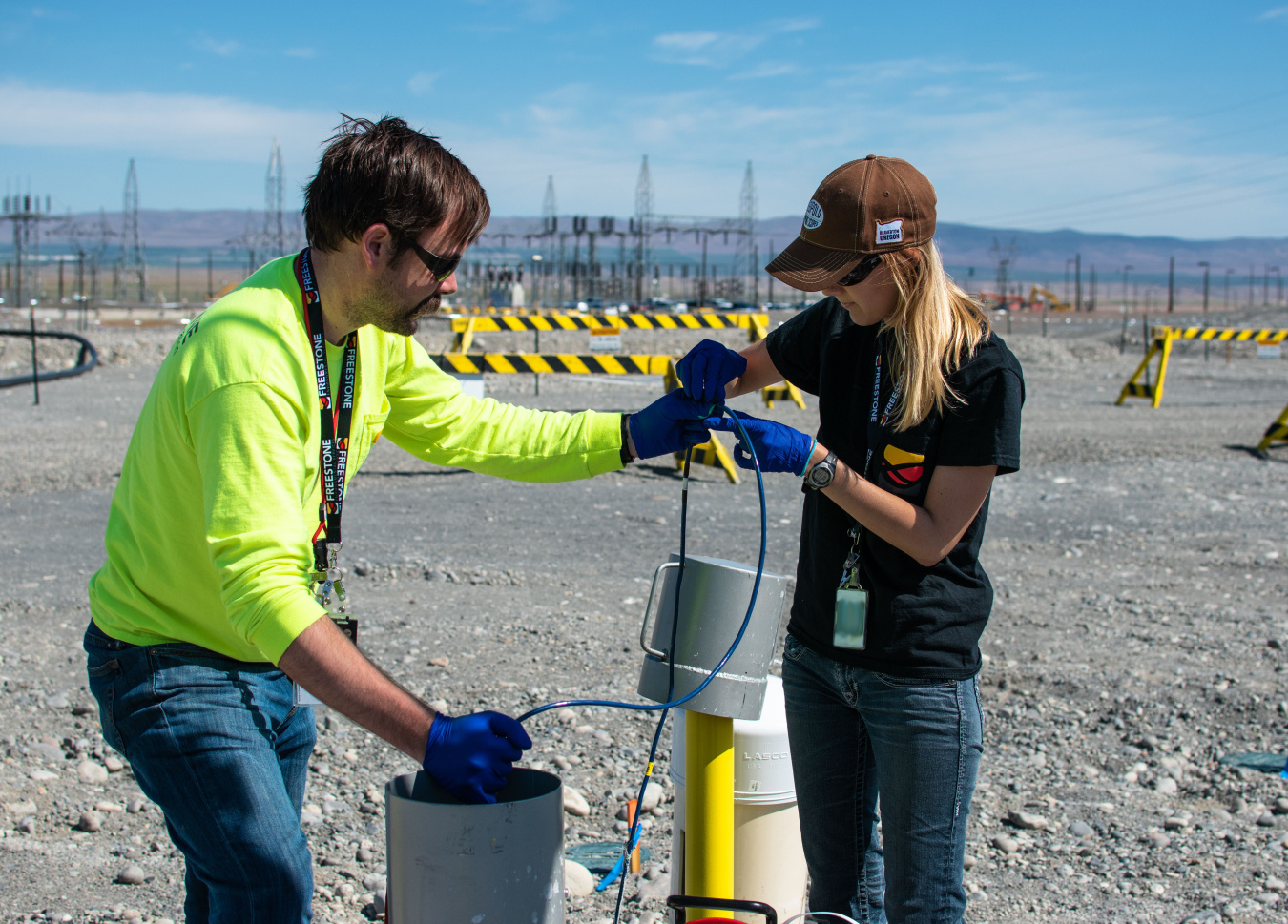A small business is the first to receive a contract under the final phase of the federal government’s Small Business Innovation Research Program.
Office of Environmental Management
May 28, 2019
RICHLAND, Wash. – A local small business supporting the EM Richland Operations Office (RL) soil and groundwater program has made history as the first company outside the U.S. Department of Defense to receive a contract under the final phase of the federal government’s Small Business Innovation Research Program (SBIR).
Richland-based Freestone Environmental Services has begun using a tool it developed under that program that could transform the way RL collects data to monitor hexavalent chromium. Nearly 550 extraction wells on the Hanford Site are available for workers to draw samples to monitor this contaminant of concern.
The U.S. General Services Administration (GSA) awarded Freestone a contract to implement its remote chromium monitoring sensor after the company successfully developed and demonstrated the product through multiple SBIR phases. The system automatically detects, samples, analyzes, and relays data on the concentration of hexavalent chromium at the moment the contaminant reaches a groundwater monitoring well.
“This is real-time data collection rather than much-delayed monitoring and waiting for the manually collected sample results to come back from the laboratories, which can take from seven to 30 days,” said Ellwood Glossbrenner, RL project scientist. “This technology will tell us exactly when it gets there, what the extent of contamination is, and the dynamic nature of the plume in the groundwater aquifer.”
A process called soil flushing is being tested in the area of a known continuing source of hexavalent chrome contamination in the soil column. The water will dissolve the chromium source and push the contaminant down to the groundwater, at which point the monitor will immediately alert workers to an increase in contaminant concentration, which is transmitted to a web-based data management platform. The hexavalent chromium will be captured using the existing groundwater pump-and-treat system.
“This will be better for the environment over the long term, because it’s getting done more quickly, which will speed up the cleanup process,” said Heidi Weber, the RL contract specialist who worked with the U.S. Small Business Administration and GSA, which have purview over the SBIR and awarded the contract, respectively.
“This has the potential to be used across the site and especially at locations where there is a known or suspected continuing source in the soil column,” Glossbrenner said. “The sensor technology can provide real-time input to help optimize groundwater cleanup and lifecycle costs for the pump-and-treat systems.”

